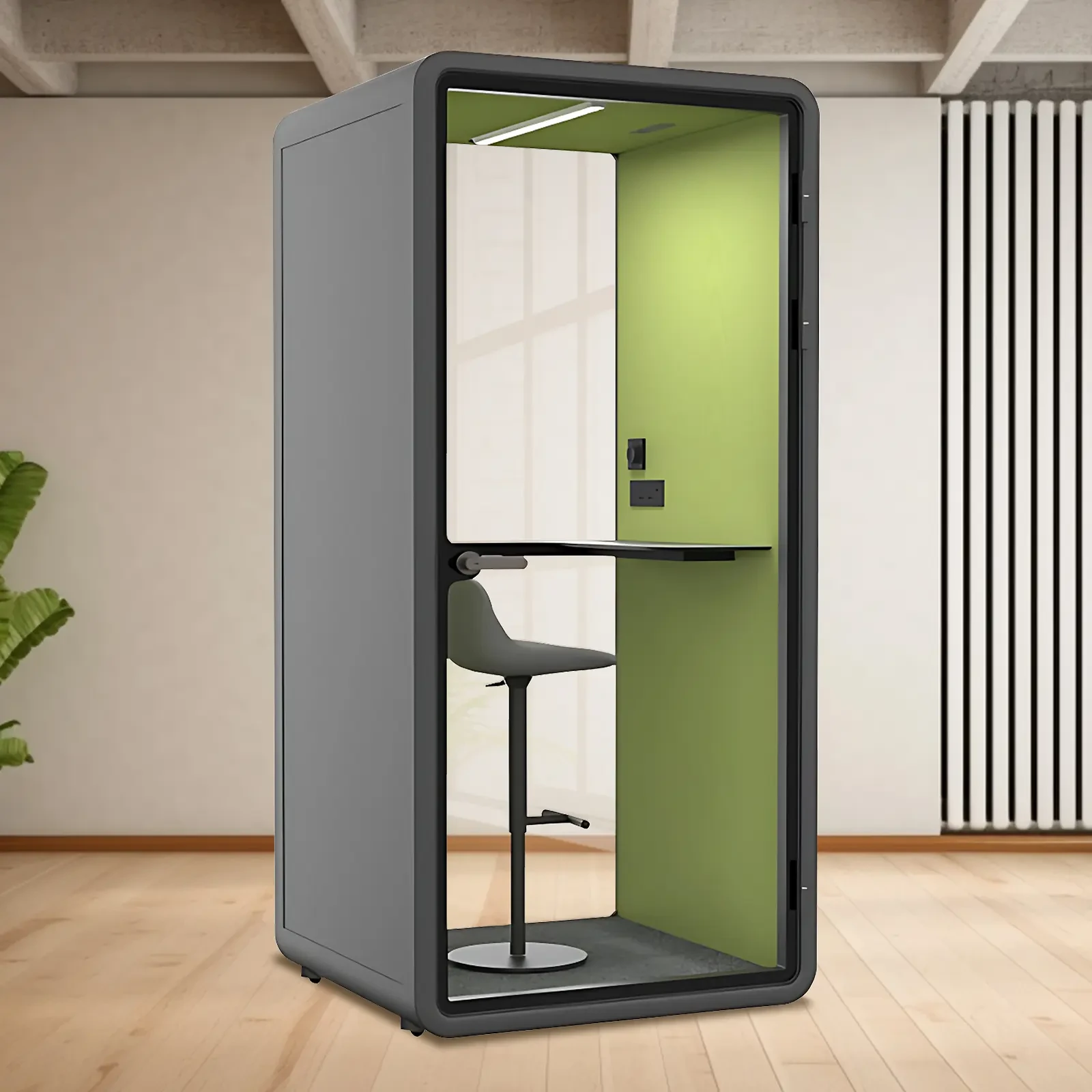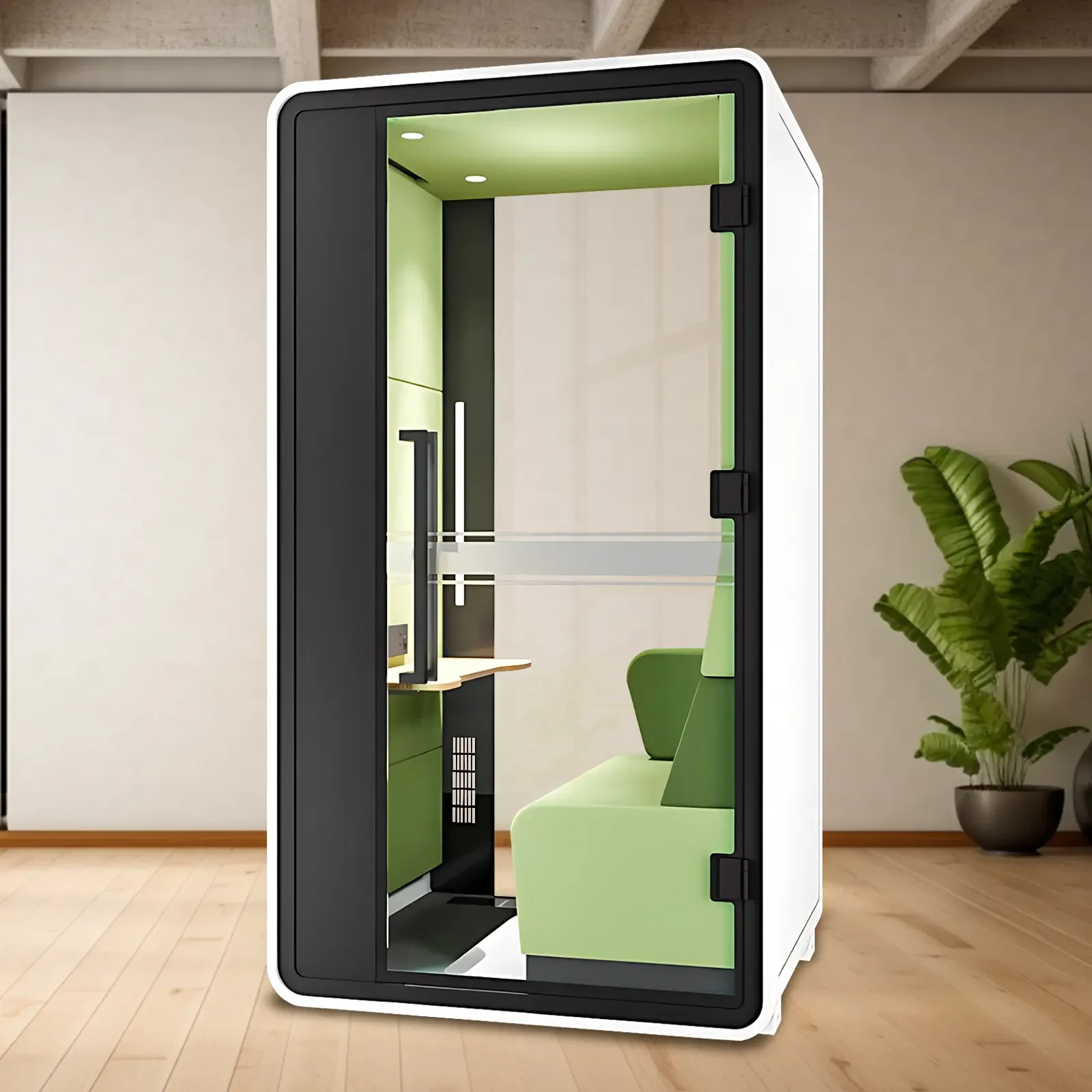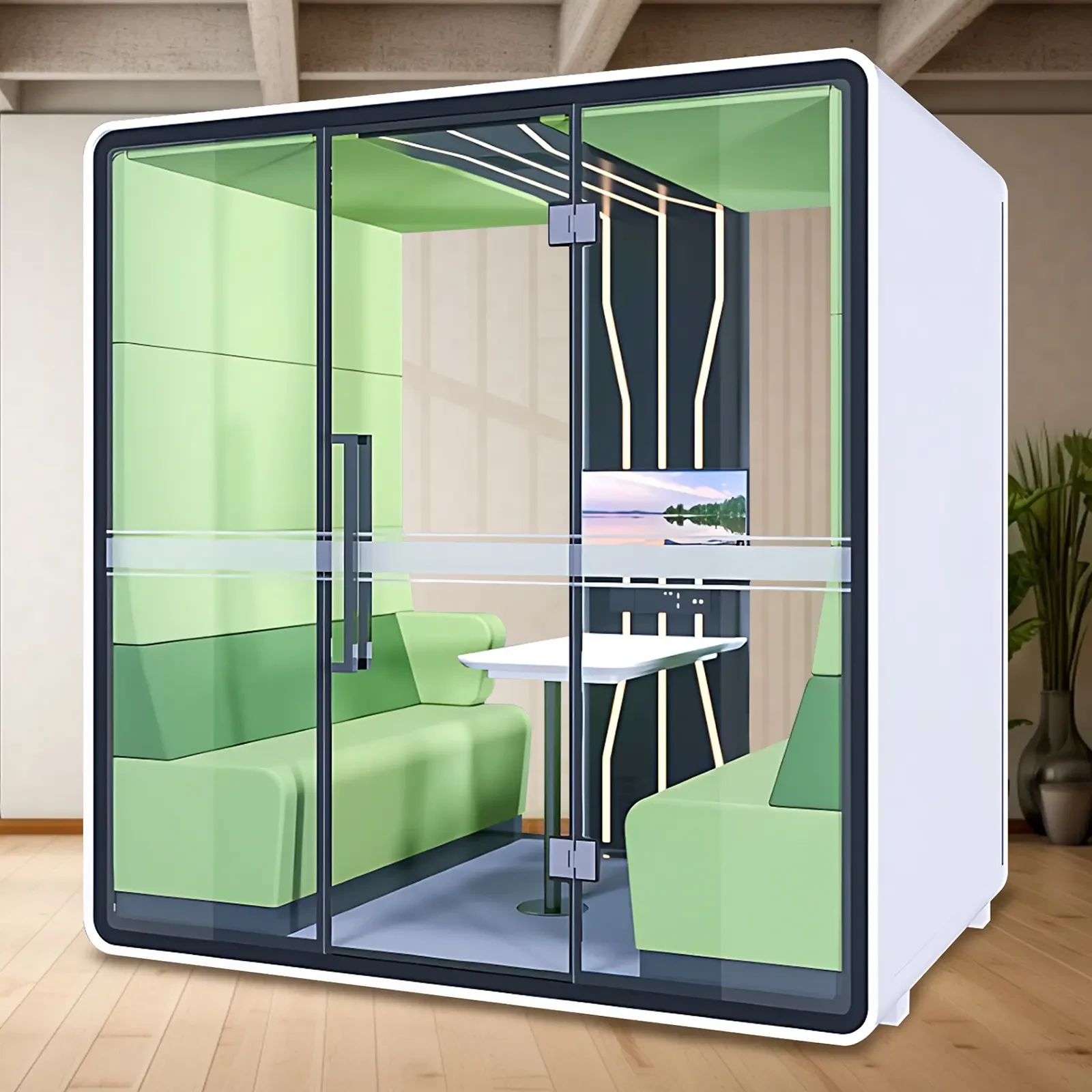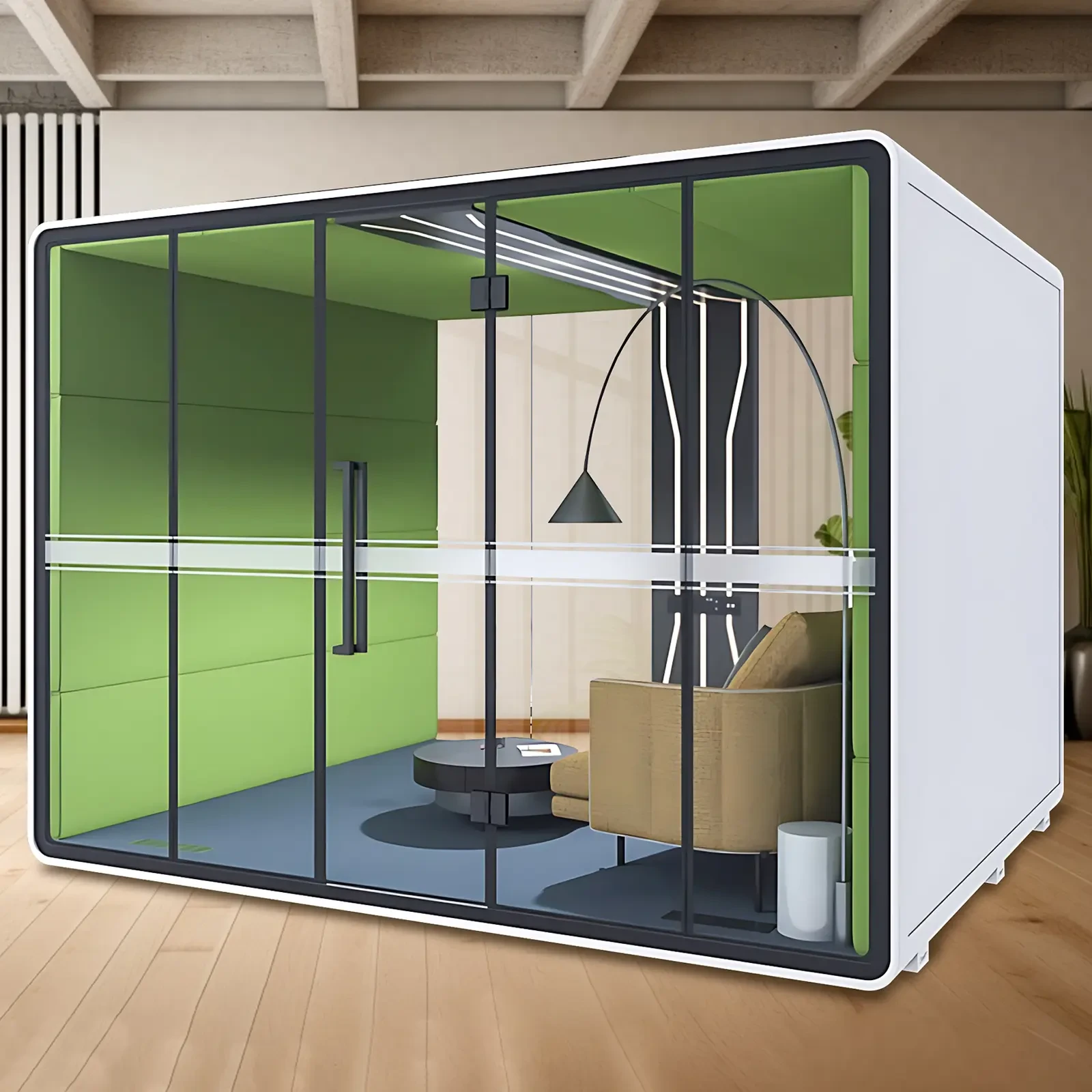Looking for a quiet place to sing, record, meditate, or focus on work at home? Soundproof sleeping pods are becoming a new favorite among urbanites! More than just a "mini karaoke bar," they're multifunctional living spaces that combine soundproofing, privacy, and aesthetics. This article explains the fundamentals of soundproof pods, from their design to their purchase. How do they block noise? Who are they suitable for? How much do they cost? What are the potential pitfalls? Don't be fooled by popular online photos. Read this article to avoid pitfalls and choose the right one!
What is a soundproof sleeping pod? How is it different from a regular pod?
Simply put, a soundproof sleeping pod is a small, portable, enclosed space designed to block out external sounds. It's commonly found in homes, studios, or livestream studios. It's not an ordinary tent or cabin; it's a "sound fortress" specifically designed for acoustics.
You may have seen those transparent glass cabins in short videos, where people sing, livestream, or play games, completely inaudible from outside—this is a typical soundproof sleeping pod. Its core function is "two-way soundproofing": it prevents your voice from leaking out (like blaring at high notes in the middle of the night) and blocks out external noise (like renovations downstairs or noisy neighbors).
Despite its name, a "sleep pod" has far more uses than just sleeping. It can also serve as a recording studio, livestreaming room, meditation corner, fitness pod, and even a makeshift office space, making it a truly versatile home gadget.
Understanding the principles of soundproofing: How does it block sound? Five key parameters.
Don't assume that clear glass and a few panels alone can block out sound! True soundproofing effectiveness depends on material structure and scientific design. Let's break down the five key elements behind it:
1. Thickness and density of the soundproofing layer: Just like wearing two thick down jackets is warmer than one, soundproofing pods typically use multi-layer composite panels (such as acrylic + polyester fiber + soundproofing pads), typically between 3 and 8 cm thick. The thicker the soundproofing, the better, especially for low-frequency noise (like thunder and car roars).
2. Sealing: Door and window gaps are a source of sound leakage. High-quality soundproof cabins use magnetic seals or rubber gaskets to ensure a seamless closure, preventing awkward sound leakage.
3. Sound-absorbing materials: Light blocking isn't enough; absorption is also necessary. Honeycomb-shaped sound-absorbing foam or rock wool is often used on the interior walls to reduce internal echoes, making singing clearer and less hollow, like singing in a tunnel.
4. Weight and stability: Heavier structures are more stable and less prone to resonance. For example, a steel frame with a metal base design is more vibration-resistant and transmits less sound than lightweight plastic models.
5. Balancing light transmittance and privacy: Most cabins use double-layer tempered glass or frosted acrylic, allowing for both light and privacy. Some even feature dimming, providing transparency during the day and privacy at night. They're incredibly attractive.
Who is best suited for a soundproof sleeping cabin? Highly Recommended for 5 Types of People
If you fit any of the following descriptions, this cabin is definitely worth considering:
1. Night owls who love singing but are wary of disturbing others: Want to sing unrestrained late at night? A soundproof cabin lets you sing freely, without fear of complaints from neighbors or reports from your wife or roommates. 🎤
2. Streamers/broadcasters/podcasters: Too much background noise in your livestream? Is ambient sound affecting the quality of your audio? A soundproof cabin with a built-in professional-grade noise-canceling microphone ensures maximum audio clarity. 🎙️
3. Deep Workers who want to focus on study or work: Is it too noisy at home and hard to concentrate? Enter the cabin for a few minutes and instantly enter a "flow state," doubling your productivity. 📚
4. Families with babies or elderly people: Crying children or snoring parents? A soundproof cabin creates a quiet oasis, perfect for mothers coaxing children or elderly people taking a nap.
5. Young people who value a sense of ritual in life: Beauty is everything! Transparent glass, ambient lighting, and a music system instantly transform it into an Instagram-worthy photo spot 📷, perfect for even your Instagram posts.
Buying Guide: Don't be fooled by "influencer" models!
There are a wide variety of soundproofing booths on the market, with prices ranging from thousands to tens of thousands of yuan. Don't just buy based on appearance alone! Remember these tips to avoid 90% of the pitfalls:
① Don't believe in "fully enclosed, zero sound leakage": All soundproofing has its limits. Truly reliable products have measured sound insulation between 30-45dB (equivalent to a library environment). Claims of "absolute silence" are basically just empty talk.
② Focus on "actual dimensions" rather than "demo images": Many products use exaggerated perspective drawings, making them appear large, but in reality, only one person can fit inside. It's recommended to choose a model with a net internal diameter of 1.2m x 1.2m or greater, otherwise it'll feel cramped.
③ Check for ventilation: Confined spaces can easily become stuffy. High-quality products are equipped with silent fans or air circulation systems to ensure smooth breathing and prevent dizziness even after extended periods.
④ Be wary of the "complex assembly" trap: Some require tools and screws, and can take half a day to assemble. Opt for modular, quick-install designs that can be completed in 30 minutes, even for women.
⑤ Prioritize certified products: Check for national building material inspection reports, fire ratings (B1), and environmental certifications (such as E1-rated panels) for greater safety.
Conclusion
Soundproof sleeping pods are not a "tax on IQ" but a practical spatial solution that enhances quality of life. They transform "quiet" into a tangible experience, especially suitable for those seeking privacy, concentration, and freedom of expression in modern cities.
For a budget between 3,000 and 8,000 yuan, you can purchase a mainstream model with balanced performance. For those seeking ultimate soundproofing and durability, consider custom models priced in the 10,000 yuan range. It's recommended to flexibly choose a model based on the usage scenario, space size, and budget.
To sum up in one sentence: Not everyone needs it, but if you are often troubled by noise and want to do something seriously, then this "hut" is really worth a try 🏡💫.

 USD
USD
 GBP
GBP
 EUR
EUR



